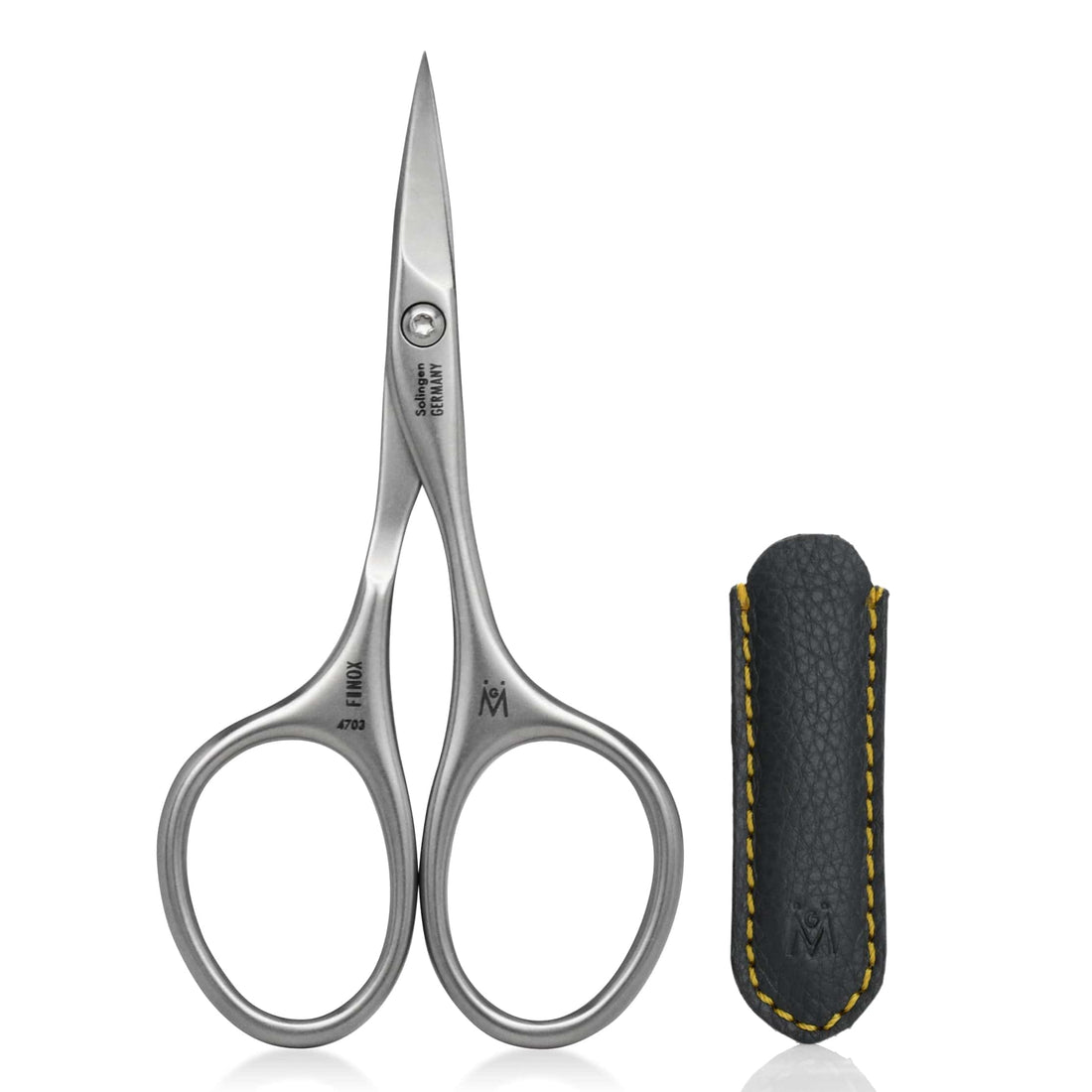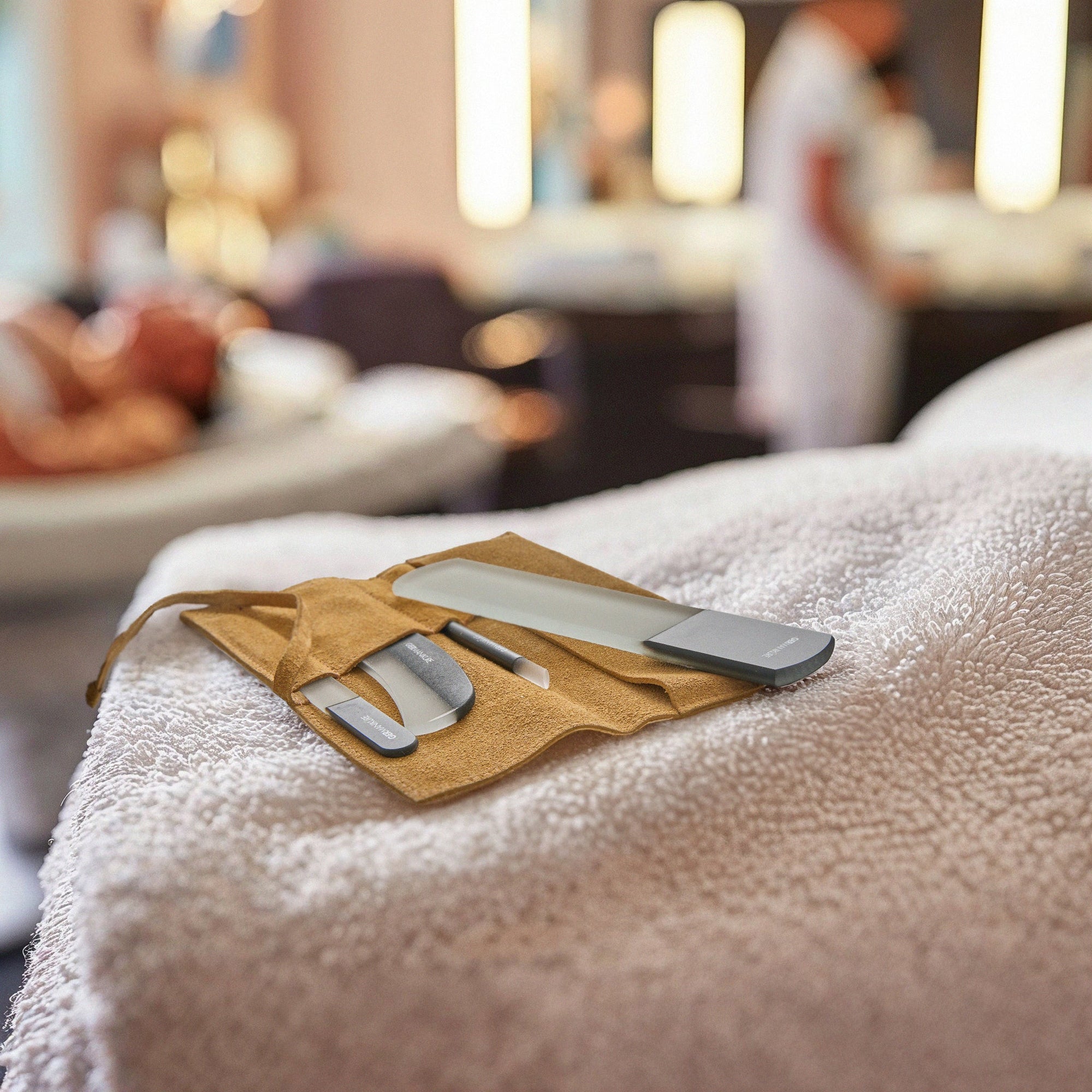They say the world of nail grooming is divided on the subject of cuticle care: to cut or not to cut? As is true of most things, the answer lies somewhere in between. Believe it or not, cuticles, those tiny layers of clear skin at the bottom edge of your nail beds, are steeped in controversy. There are many schools of thought on how to properly manage them. So how do you manicure your cuticles? How often should you remove your cuticle? Should you remove it at all? And if you do, what tools are used to remove cuticles? These are all important questions to ask.
But first, let's talk about what cuticles even are, and why we have them. Your cuticles are the thin transparent layer of skin at the bottom of your nail bed. They're there in order to protect new nails as they grow in, and they keep dirt and bacteria from getting lodged under your skin where your nail meets your finger. Cuticles have an important job to do, but they're very delicate. It's crucial to keep them moisturized so they don't get dry and cracked when that happens, it's easier for bacteria to get in and cause infections and other unpleasantness. In addition to moisturizing, you can also push them back with a cuticle stick so that they don’t get in the way of a neat nail polish job. Some people even go as far as trimming their cuticles - Russian manicures, for example, feature a completely clean nail bed, and that requires total removal of the cuticle. But aside from that, it’s not generally necessary to completely remove your cuticles - pushing them back and keeping them moisturized is usually enough.
To Trim or Not to Trim? Your Cuticle Care Game Plan
If you’re just starting out, or if you haven’t done anything with your cuticles for a long time, then you might want to do some trimming, and you’ll need to know how to use a cuticle remover tool. The first step toward neat cuticles is to push them back with a cuticle pusher. Luckily, Germanikure makes the best cuticle pusher on the market. They make all the best manicure cuticle tools and their cuticle stick is no exception - just like their crystal nail files, the filing surface of the cuticle stick is etched glass that never dulls or wears out. As you use it to push back the cuticle, it exfoliates the dead skin, leaving the living tissue intact. You can even use the pointed end to clean under your nails! (And if you dip it in nail polish remover, you can use it to clean up polish mistakes when you do your nails at home. Seriously, it’s the all-around best cuticle tool and if you don’t already have one, you should definitely add one to your collection of manicure tools.)
Consistent maintenance, meaning pushing back your cuticles and using the stick to exfoliate the dead skin away once a week or so, can be all you need. But if you’ve let it go for too long (I am 100% guilty of this, so I’m not judging), pushing the cuticle back can result in an unsightly ridge of dead skin that you’ll want to trim off. But trimming them can be tricky, so tread carefully.
Tool Time: Picking the Best Gear for Cuticle Duty
Contrary to what you might think, the best cuticle cutter is not actually the tiny nipper—those are best for hangnails and dead skin around the edges of your nails. Cutting your cuticles with a nipper makes it hard to maintain a nice, clean line, so you’re more likely to end up with a jagged edge with little cuts along the way, which can lead to hangnails and inflammation, which can leave your nails prone to infection.
Instead, the best way to remove cuticles is with a cuticle scissors. This may sound counterintuitive, but hear me out: when you use a scissor, which has a longer blade than a nipper, you can cut in one continuous line, meaning you won’t get those jagged little cuts that are so prone to bleeding and inflammation. And using a curved blade to cut your curved nail bed makes a lot more sense, when you think about it. Scissors are also much more forgiving than nippers, which means they’re great for beginners—you don’t need a ton of skill in order to use them. If you’re in the market for a good pair of nail scissors, Germanikure’s are not just the best scissors, but the best cuticle remover tool you can find. They’ll last for over thirty years, and they don’t need all the maintenance and sharpening that cheaply made cuticle scissors require.
So in conclusion, the only time you’ll want to cut your cuticles is if they’re overgrown, if you need to fix something like a hangnail, or if you’re going for the Russian manicure look. The rest of the time, maintaining a consistent routine of pushing them back and then applying some oil to keep them moisturized is all you need to do. If you do that diligently for a few months, your cuticles will look nice and clean and healthy, and they’ll be able to do their main job, which is to seal the nail bed and keep infection-causing bacteria from getting under there.







